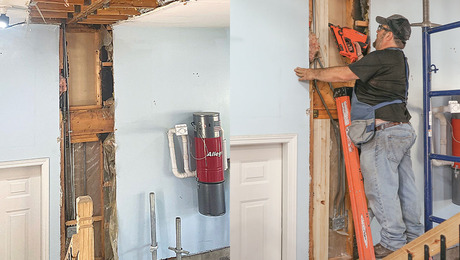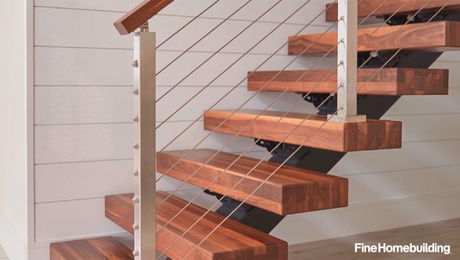I’ve got a two zone force air HVAC system. Well, right now it’s really a one zone system. The Honeywell motorized damper for one of the zones was installed improperly. The motor was installed on the bottom instead of on the side or top, as the instruction suggest. The duct sits between the floor joists so it doesn’t appear that the motor could go on either the side or the top.
Does anyone have any experience/suggestions on how I might fix this problem?
Thanks in advance – AYAL















Replies
If it can go on the top, why won't it work on the bottom mount? Seems like the drive motor/linkage should work in either position.
Dave
From the Honeywell direction I've found on the net, regarding the damper, it says never to put the motor on the bottom but doesn't seem to explain why. The only thing I can make out is that the motor is not powerful enough to drive the damper flap if the whole weight of the flap is on it.I've been searching for, but have yet to find, an alternative motor that might be capable of driving the flap even with the weight.- AYAL
I don't think it has anything to do with weight. I suspect it's simply so that condensation doesn't collect on the motor.If the damper isn't working there's another reason.
If Tyranny and Oppression come to this land, it will be in the guise of fighting a foreign enemy. --James Madison
The drive motors are mounted outside the duct on the ones I have worked with. The drive linkage penetrates the duct and operates the damper vanes. I wouldn't think condensation would be and issue if the duct is located in a conditioned space, or well insulated, if not.
Maybe a call to Honeywell tech. support is in order, ya think?
Dave
Condensation occurs on the outside of the duct if the AC is on and the duct is in "unconditioned" space. Condensation doesn't tend to occur inside the duct in normal circumstances since the air is at its coldest just after it passes over the evaporator coil, and it gets warmer from there. The RH is 100% at the coil and drops below 100% (the point of condensation) as soon as it enters the ductwork.
If Tyranny and Oppression come to this land, it will be in the guise of fighting a foreign enemy. --James Madison
My guess is that it is a spring-return damper and when it's upside down it can not overcome gravity.
If there is no way to yank out the damper and reinstall correctly I think you have to gut the assembly and live without it.
All the dampers I've seen use twisting vanes. Since they're symmetrical about their axis there's no net effect on the vanes due to gravity, other than friction at the bearings.
If Tyranny and Oppression come to this land, it will be in the guise of fighting a foreign enemy. --James Madison